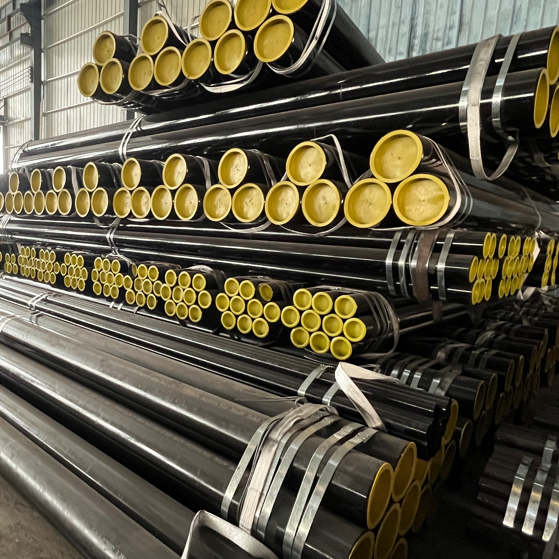The advantages of epoxy powder coated seamless steel pipes,excellent environmental performance: The hot-dip plastic process used in plastic-coated steel pipes for drainage does not contain harmful substances and meets environmental protection requirements. At the same time, it is recyclable, which is conducive to the recycling of resources.
Easy installation: Plastic-coated steel pipes are lightweight, corrosion-resistant, and have high compressive strength. No welding is required during installation, which greatly reduces installation difficulty and time.
Low maintenance costs: Plastic-coated steel pipes have good wear resistance, which can effectively extend the service life and reduce the number of maintenance times and costs.
The wear resistance of epoxy powder-coated seamless steel pipes,compared with traditional steel pipes, epoxy powder-coated steel pipes have superior wear resistance. Because the surface of the inner plastic-coated steel pipe has been specially treated, it has good wear resistance and can effectively resist the erosion of chemical substances such as acids, alkalis, and salts, and prolongs its service life.
Epoxy powder-coated seamless steel pipes will not wear out during transportation, thus reducing the number of repairs and costs of the pipeline system. At the same time, because the inner coating has good elasticity, it can buffer external impact and reduce the pressure loss of the pipeline system.is not affected by the internal medium of the pipeline system. Whether it is transporting media such as water, oil, or gas, plastic-coated steel pipes can maintain stable wear resistance.
Coated seamless steel pipes application fields of epoxy powder coated steel pipes,petrochemical industry: used to transport various corrosive media, such as acid and alkali liquids, oil and gas, etc.electric power industry: used in power transmission and distribution lines as cable protection tubes.construction industry: used for water supply, drainage, ventilation, and other piping systems in buildings. Industrial industry: used to transport various chemicals, gases, liquids, and other media.Urban heating system: used to transport hot water and steam, with good thermal insulation performance.
 How to apply hot dipped galvanized steel pipe?
How to apply hot dipped galvanized steel pipe?
 ASTM A106 Thick-walled steel pipe production steps
ASTM A106 Thick-walled steel pipe production steps
 Shengtian Group successfully participated in the Russian Oil and Gas Exhibition
Shengtian Group successfully participated in the Russian Oil and Gas Exhibition
 Is API 5L Black Steel Pipe Good For Air Lines?
Is API 5L Black Steel Pipe Good For Air Lines?